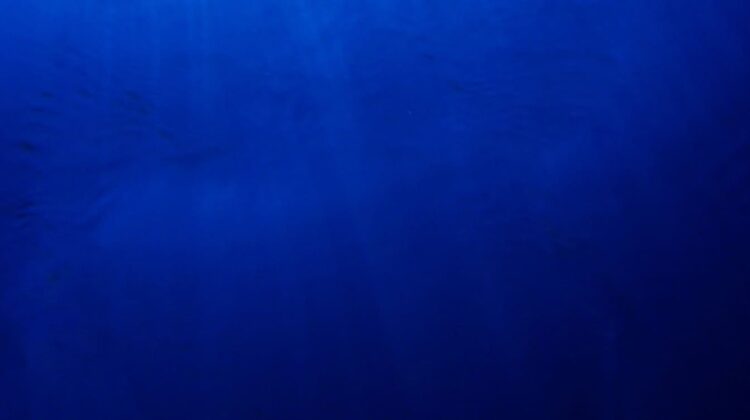
As oceans warm, temperate reef species edge closer to extinction, study shows
- New research found that most Australian shallow reef species, including fish, corals, seaweeds and invertebrates, experienced population declines over a decade, mainly in response to warming events driven by human-induced climate change.
- While scientists recorded species decline across Australian waters, some of the most pronounced changes occurred on the temperate reefs of southern Australia, a region that has received less conservation attention than tropical reefs.
- The authors say temperate reefs could be in greater danger of extinction than tropical species, leading to calls for increased conservation efforts for these threatened ecosystems.
Marine heat waves have led to widespread population declines of Australian shallow reef species, particularly those associated with temperate reefs, new research suggests.
In a new study published in Nature, scientists draw on extensive reef survey data to assess population trends of 1,057 common shallow reef species, including fish, corals, seaweeds and invertebrates. They found that populations of 57% of these species declined between 2008 and 2021. Moreover, 28% of these surveyed species experienced declines of more than 30%, which would qualify them as threatened with extinction if assessed according to IUCN Red List criteria, the authors say. For instance, the study found that the weedy seadragon (Phyllopteryx taeniolatus), a fish endemic to southern Australia, decreased by 59% from 2011 to 2021.
According to the study, most of these declines happened after warming events, specifically when the water temperature rose by more than about 0.5° Celsius (0.9° Fahrenheit) above 2008 levels. Conversely, warming that didn’t exceed 0.5°C led to an increase in some species.
“In this paper, we detected a 0.5-degree threshold over which we really saw significant biodiversity change,” Amanda Bates, study co-author and marine ecologist at the University of Victoria, tells Mongabay. “I analyzed some of the data sets from Tasmania, and I know there was significant change in those locations. But I think what was special about this analysis is it allowed us to test for relative change across all of Australia, including Tasmania. So that allowed us to compare the relative shifts that are happening across this massive temperature gradient in Australia.”
The study used decades of data collected in thousands of locations across Australia by citizen science and reef monitoring programs. While scientists recorded species decline across Australia, some of the most pronounced changes occurred on the temperate reefs of southern Australia, a region that has received less conservation attention than the better-known tropical coral ecosystem of the Great Barrier Reef.
“For a number of species, there were quite catastrophic declines, and most of those were located in southern Australia in the temperate zone, rather than the tropical zone,” Graham Edgar, lead author and marine ecologist at the University of Tasmania, tells Mongabay. “In retrospect, that’s not such a surprise given that water temperatures have increased on average one and a half degrees to 1.5° [C, or 2.7°F] since the 1940s across this region. So globally, it’s a hotspot for warming.”
The authors say that temperate reefs could be in “greater jeopardy of extinction than tropical species” since many temperate species are susceptible to warming and because there is little habitat for them to retreat to as waters warm.
“They’re basically getting pushed to the edge of a cliff with the Southern Ocean [as a barrier] and nowhere to retreat further to the south as conditions warm,” Edgar says. “So overall, the populations of those species are declining rapidly.”
Another reason temperate reef species are particularly vulnerable is because of their high levels of endemism, the authors say. In other words, these species would struggle to live in other parts of the ocean. Of the temperate species surveyed for the study, the researchers found that 70% were endemic.
For instance, the 14 species in the handfish family — unique fish that “walk” across the seafloor with their fins — are restricted to areas around Tasmania. Many are now threatened with extinction. Experts believe there are only about 100 critically endangered red handfish (Thymichthys politus) and 5,000 spotted handfish (Brachionichthys hirsutus). Another species, the smooth handfish (Sympterichthys unipennis), was in 2020 declared extinct.
“These are representative of the cooler temperate species being extremely threatened but generally being out of sight,” Edgar says. “And really, the whole cold temperate fauna, both in Australia and worldwide, needs a lot more attention than people have paid to it today.”
The study also highlighted significant declines in invertebrates, particularly echinoderms such as sea stars and sea urchins, in cool and warm temperate regions. For instance, cool-temperate echinoderms declined by 20% over the study period, and warm-temperate echinoderms declined by 40%.
Bates says she was surprised by the “magnitude of the decline in the invertebrates.”
“Yeah, it’s high,” she says. “And when you look around more broadly, we’re also seeing declines in invertebrates in other places, so I think we kind of missed.”
The authors say that mitigating climate change would have the most positive impact on Australian shallow reef species. But they also say it’s essential to scale up local conservation efforts to help temperate reefs and other ecosystems be more resilient to climate change impacts.
“Our study highlights the need to reduce local-scale stressors on the system,” Edgar says, “so that they’re not compounding on top of the global stressors that are also operating and that have the bigger impact overall.”
Author: Elizabeth Claire Alberts, is a senior staff writer for Mongabay.
Citation: Edgar, G. J., Stuart-Smith, R. D., Heather, F. J., Barrett, N. S., Turak, E., Sweatman, H., … Bates, A. E. (2023). Continent-wide declines in shallow reef life over a decade of ocean warming. Nature. doi:10.1038/s41586-023-05833-y
Credits: This article by Elizabeth Claire Alberts, https://news.mongabay.com/ is published here as part of the global journalism collaboration Covering Climate Now.
